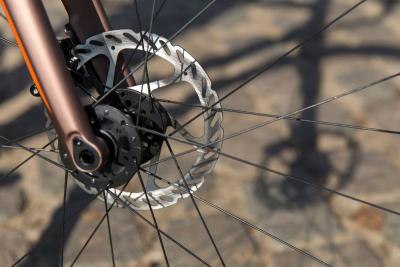Replacing and bedding disc brake pads [How-To]
It is essential to properly maintain the brakes on your road bike or mountain bike. This is no different with disc brakes. If you head into the mountains, it is therefore advisable to check your disc brake pads carefully. Of course, you want to be able to brake as well as possible on descents. If the pads are worn or dirty, they should be replaced. After replacement, the disc brakes should also be bedded in so that the bike brakes optimally again. You can read how to do this in this blog.
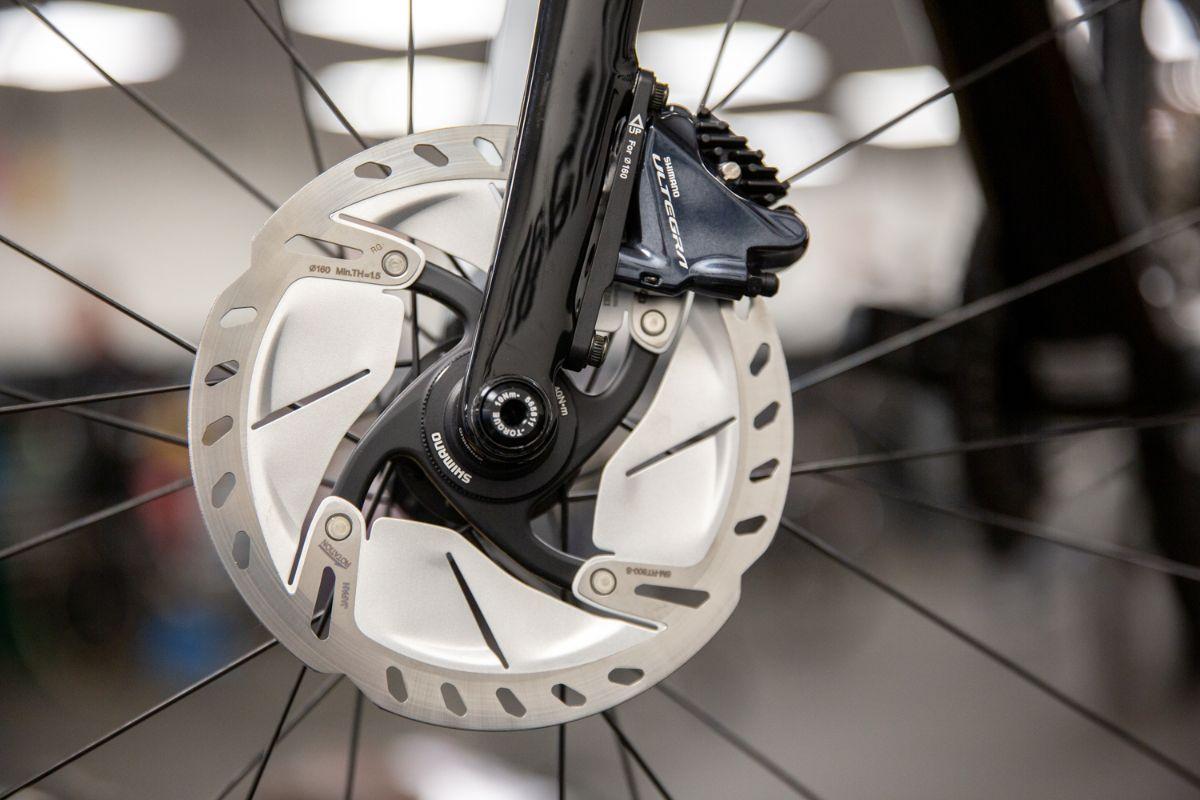
Which type of disc brake pads should I choose?
What are the best brake pads for your road or mountain bike is very personal. You can opt for either soft (organic/resin), medium (semi-metallic) or hard (metallic) brake pads. Each kind has a compound made of a different type of material and thus has its advantages and disadvantages.
In addition, how durable the pads are, differs per type. This is because the faster the pads wear out, the less durable they are.
The doseability of your disc brakes is also affected by what disc brake pads you use. The dosing ability is the degree to which you dose the braking. This means that if you squeeze the brakes hard, you will automatically brake harder than if you squeeze the brakes more gently. So with good doseability, you will have much more control over your disc brakes.
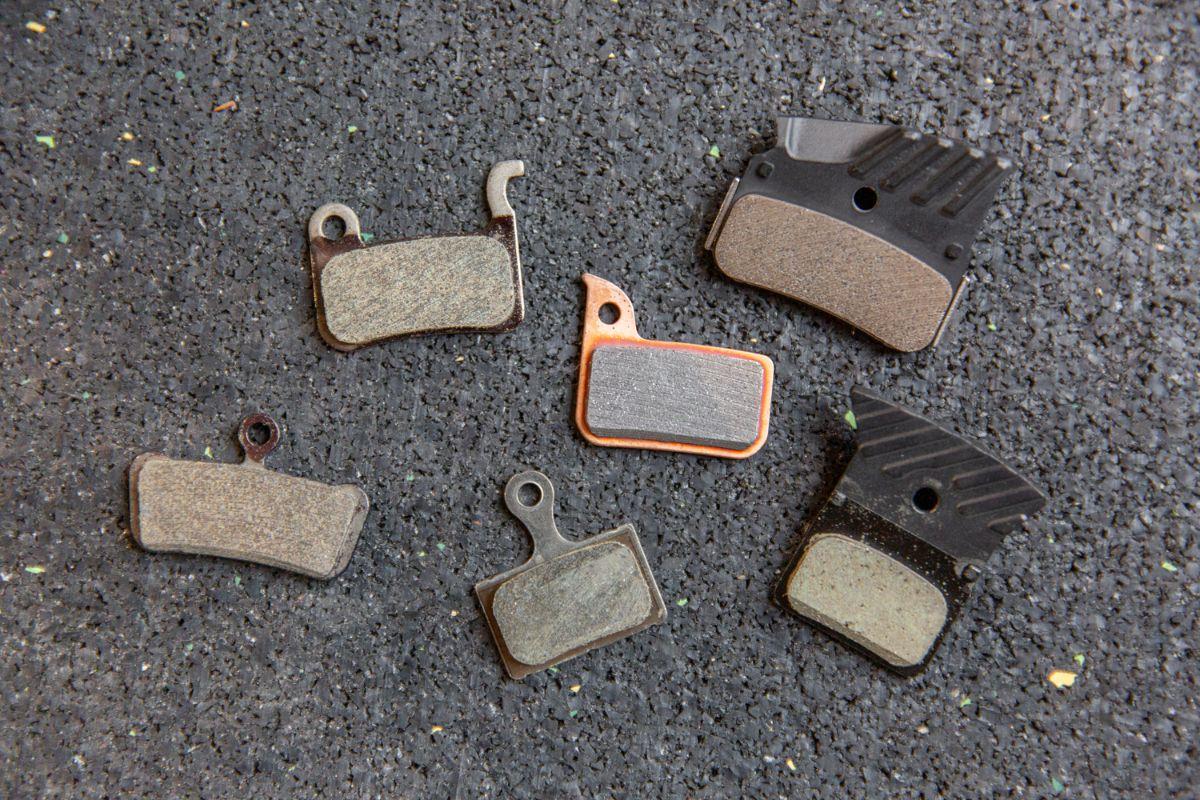
There is also a difference between brake pads in terms of the temperature they can handle. For example, certain pads can better withstand the heat released during braking on long descents.
Because the pads are made of different types of materials, there is also a difference in braking power. Certain types of pads brake more powerfully and can therefore stop the bike more abruptly than others. In addition, some materials also create a louder noise during braking than others.
An overview of the different types of brake pads (soft, medium and hard) and their advantages and disadvantages can be found in the overview below.
| Soft (Organic/Resin) | Medium (Semi-metallic) | Hard (Metallic) | |
| Material | Organic | Mix of organic materials and metal | Metal |
| Durability | Low | Average | High |
| Doseability | High | Average | Low |
| High-temperature tolerance | Low | Average | High |
| Braking power | High | Average | Average |
| Noise during braking | Little | Average | A lot |
What do you need to replace your disc brake pads?
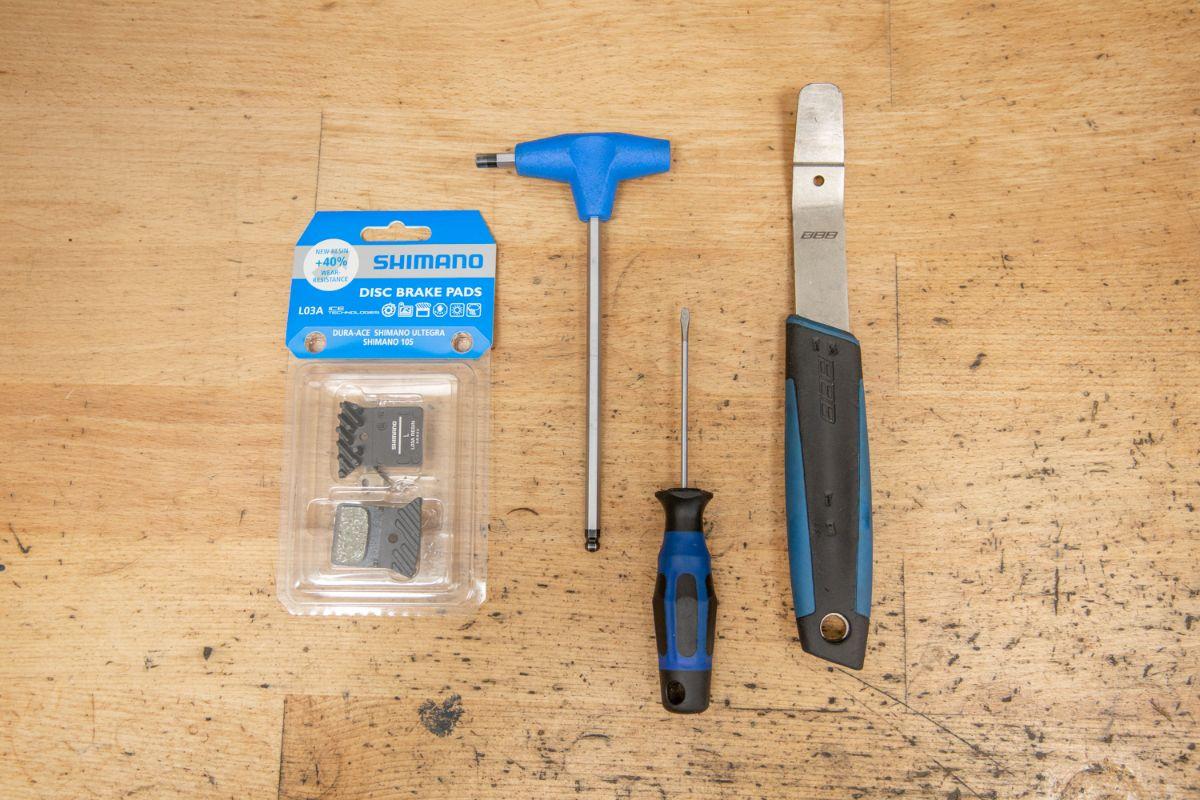
If you want to replace your disc brake pads, you will need:
Important tips before replacing your disc brake pads
- Make sure you always degrease the rotors. Both when fitting new pads but also when fitting new rotors. Use an alcohol-based brake cleaner for this, not petrol-based.
- Try to avoid touching the disc and compound of the blocks with your hands as much as possible. Always grab the side or back as you will otherwise contaminate them with grease on your hands.
- When tinkering with your bike, make sure you can always easily reach everything. A repair stand is the ideal solution for this.
Replacing disc brake pads
Breaking in the disc brake pads
If you have replaced the disc brake pads then you are not there yet. For optimal braking, it is very important to bed the pads in properly. This increases braking power. It also prolongs the life of the disc brake pads.
What happens to disc brake pads when bedding?
The compound of your brake pads is made of a resin containing pieces of metal or softer materials such as plastic. When you bed in your pads, you are not only bedding your pads, but also your rotors. The brake pads and discs work optimally together when the pads leave a layer of film on the rotor.
This film comes from the resin and metal/plastic melting under high temperature when braking. Also, the shape of the brake pads will conform to the rotor. In fact, it is very common to have a scratch or edge in your rotor from previously used brake pads.
What is the best way of bedding your disc brake pads?
It is important to properly bed your disc brake pads before your first bike ride. This will ensure you have the most consistent, quiet and powerful brakes. It is very important to do this because if the bike is ridden hard before the rotors and disc brake pads have been bed in, this can seriously affect braking performance. This can result in squeaky brakes and/or a lack of stopping power.
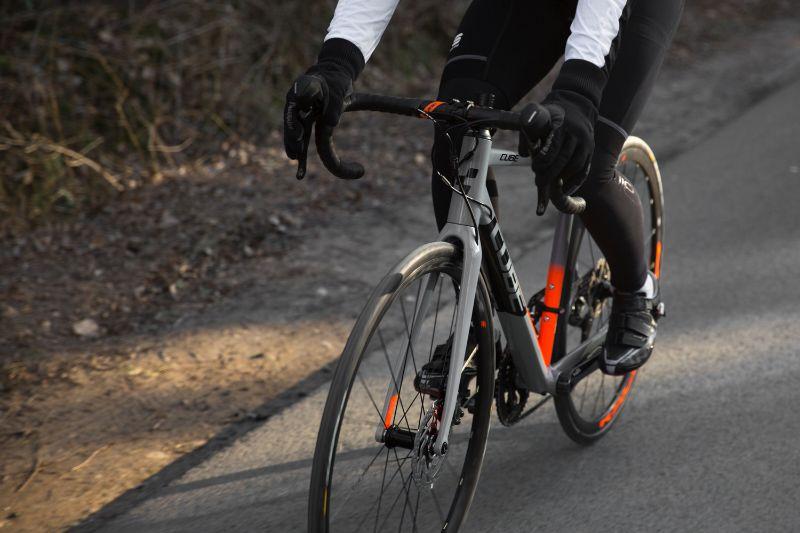
There is no single answer to the question of how best to bedding because manufacturers each recommend their own way of braking in disc brake pads. For example, Shimano recommends a different way of breaking in than Hope. Therefore, we will explain per brand how best to bed in the disc brake pads.
Shimano
- Accelerate the bike to a speed of 32 km/h.
- Brake firmly and evenly until you are almost at a standstill.
- Repeat 10 to 20 times.
SRAM/Avid
- Accelerate the bike to a moderate speed (about 20 km/h), then brake firmly until you are at walking pace. Repeat about 20 times.
- Accelerate from the bike to a higher speed (about 32 km/h). Then brake firmly and suddenly until you reach walking speed. Repeat this about 10 times.
- Let the brake cool down before starting your first ride.
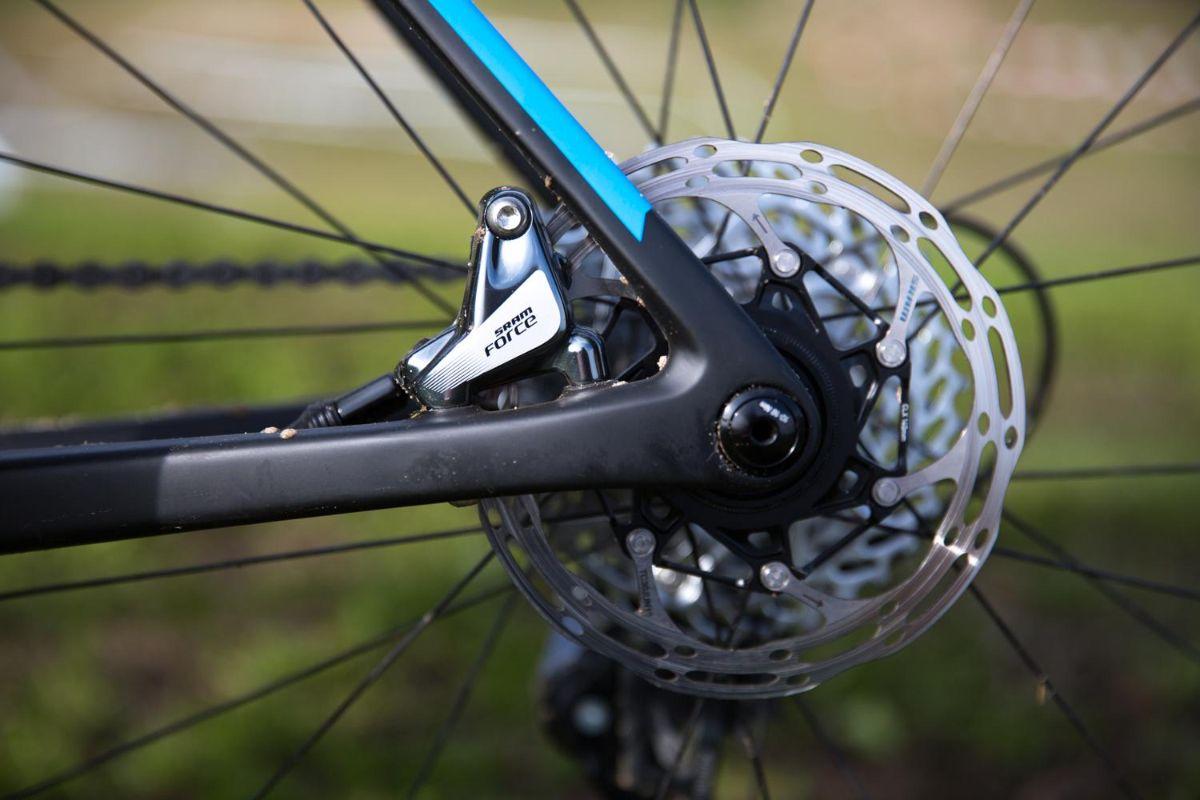
Hope
- Ride with the brake lightly applied for two minutes.
- Brake to a slow stop, then continue cycling regularly to cool down the pads..
- After two minutes, brake a little harder to come to a full stop.
- Repeat until you feel that the brakes work well and respond accurately.
Magura
- Accelerate to about 30 km/h.
- Brake firmly until the bike comes to a complete stop.
- Repeat this 30 to 50 times.

Tektro
- Cycle as fast as possible (25-30 km/h).
- Brake firmly until the bike comes to a complete stop.
- Repeat 30 times in a row.
Formula
- Cycle on flat surfaces at a speed of 30 km/h.
- Brake firmly until the bike comes to a complete stop.
- Repeat at least 50 times.
Conclusion
As you have read, it is very easy to replace your disc brake pads yourself. However, it is important that when you go to fit a new rotor, you should always fit new brake pads as well. If you don't do this then the old disc brake pads will not leave a film on the new disc.
As a very last tip, we want to tell you that you should always keep a set of bedded brake pads of the same type as a spare. That way, you always have the option of changing if it rains, for example, or before a race or marathon.
Mees Janssen
I am very occupied with everything that has to do with cycling in my spare time. The fact that I get to do this during my job as well makes it all the more special. Since I live in Arnhem, I like to go cycling in my “backyard” (de Posbank) with my road bike or mountain bike. Besides cycling myself, I also love to watch professional cycling on the tv. My television is doing overtime during the summer, because I like to follow all the big cycling tours like the Giro, the Tour de France and the Vuelta. It may come as no surprise that when the Giro d´Italia crossed Arnhem in 2016, I was over the moon!
Related posts

How To Plan a Route Using Komoot? [How-To]
27 March 2023Planning and finding your own cycle routes sounds more complicated than it actually is ...

Do your own bike maintenance work! [Do It Yourself Tips]
7 February 2023Buying a new road, mountain or gravel bike is one thing. Maintaining your bike properly is another ...
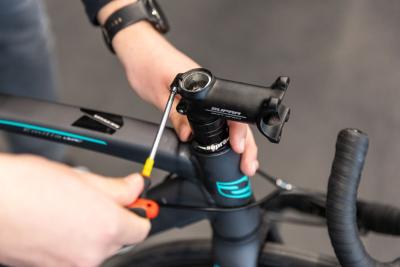
Replace the stem of your road bike in 11 steps [Bike Techcenter]
26 April 2022For road cyclists, being comfortable on your bike is of the utmost importance ...
 Nederland
Nederland België
België Deutschland
Deutschland United Kingdom
United Kingdom Finland
Finland Ireland
Ireland Luxembourg
Luxembourg Portugal
Portugal Poland
Poland Österreich
Österreich France
France España
España Italia
Italia Sverige
Sverige Danmark
Danmark










































































































































































































































